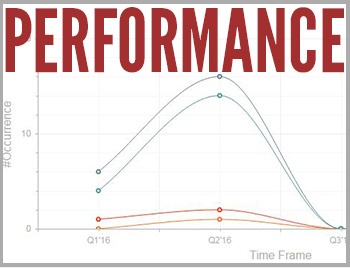Understanding What Safety Performance in Aviation SMS Is

Safety performance in aviation safety management systems (SMS) can be difficult to fully comprehend because it involves so many moving parts. In general, we understand safety performance as involving the:
- Ability to comply with regulations of oversight agencies;
- Ability to monitor operational safety performance;
- Risk management processes to mitigate risk and monitor risk controls;
- Data management capabilities to set and monitor safety goals and objectives; and
- Ability to meet organization-specific KPIs related to safety goals.
Related Articles on Aviation SMS Key Performance Indicators
- What Is a Key Performance Indicator (KPI) in Aviation SMS? - With Free KPI Resources
- 6 Sources for Aviation Key Performance Indicators
- How to Automate Key Performance Indicator KPI Monitoring in Aviation SMS
Different aviation risk management attitudes stress different areas of performance. Prescriptive programs stress compliance performance. Performing programs stress operational and organization-specific performance.
While all safety managers would agree that finding a balance between different aspects of an aviation SMS' performance, actual practice often proves much different. Finding more of a balance can be helped by focusing on the following 3 aspects of safety performance:
1 – Erosion of Risk Controls

Aviation SMS risk controls are the backbone of safety managers' bureaucratic effort towards better safety performance. Risk controls are numerous, with everything from safety policy to effective safety promotional techniques. When effective risk controls have been implemented into an aviation SMS, that safety program will inevitably perform extremely well and cultivate a highly performant safety culture.
But while risk controls have an overtone of being static measures, they are anything but. Risk controls are and should be dynamic controls. They should be responsive to:
- Changes in aviation safety oversight compliance;
- Employee and management turnover;
- Changes in technology;
- And so on.
The reason risk controls need to be responsive is because of risk controls erosion. Erosion is when risk controls gradually, and sometimes imperceptibly, begin to inadequately address evolving environmental factors (i.e. compliance, technology, etc.). If risk controls are not constantly analyzed and revised, they will erode and over time become increasingly obsolete.
Superior safety performance in aviation SMS will hinge on the ability of safety managers to constantly review and revise risk controls, both in reaction and anticipation to specific changes in the environment.
2 – Lagging and Leading Indicators
An important part of risk controls in aviation SMS are leading and lagging indicators. Safety professionals will of course probably already be very familiar with leading and lagging indicators.
Lagging indicators are metrics for safety events that have already occurred. They include high-severity negative outcomes and lower-level system failures. An example would be the number of unstabilized approaches per 100 landings. Leading indicators measure factors that affect future performance – both positive and negative indicators.
Risk controls will attempt to address many leading and lagging indicators. When erosion of risk controls occurs, the severity of lagging indicators will increase. There will be a negative impact on the percentage of standard operating procedure (SOP) hazards identified.
As lagging and leading indicators are comprehensive of most potential risks, organizing and creating risk controls for them will be for the sole aim of safety performance in the safety program.
Related Articles on Lagging and Leading Indicators in Aviation SMS
- What Are Leading Indicators in Aviation SMS Programs?
- Understand Aviation SMS KPIs Lagging and Leading Indicators
- How to Use Leading Indicators in Aviation SMS
3 – Reactive Analysis

The ability to mitigate safety incidents in a timely fashion will play a major role in safety performance. Creating a positive, diverse safety culture is a type of informal safety control, but one that is much harder to monitor, change, and cultivate. Moreover, SMS training and safety promotion also serves a similar purpose, but judging their effectiveness can also be difficult as well.
By analyzing the response to safety incidents, safety managers can successfully observe how developed and performant are the reactive risk management processes. Analyzing mitigation responses of employees involves looking objectively at
- Context: the conditions that the incident took place in;
- Mechanisms: the actions that individuals made in response to the context; and
- Outcome: what resulted from those actions.
This process is about clarifying the incident’s unique relationship between the factors contributing to risk and the outcome. The more inverted the relationship, the better the mitigation. For example, if the context has high risk, but the outcome was positive, then mitigation was successful.
Reactive analysis gives safety managers an understanding of the mechanisms that contribute to the safety performance that may be outside already established risk controls. Once those understandings have been made, they can be integrated into their risk controls.
Related Aviation SMS Reactive Risk Management Articles
- Difference Between Reactive, Predictive and Proactive Risk Management in Aviation SMS
- What Is Reactive Risk Management (Why It’s Essential for Aviation SMS)
- From Reactive to Proactive Risk Management in Aviation SMS
Final Thought: Safety Performance Maintenance Process
Safety performance in aviation SMS is largely dependent on safety managers’ ability to:
- Create risk controls around leading and lagging indicators;
- Monitor and revise those existing controls in reaction and anticipation to risk factors; and
- Analyze mitigation efforts to incorporate actions into risk controls.
Safety Performance in aviation safety management systems is, like risk controls, dynamic, and fluctuating.
Last updated in August 2025.







